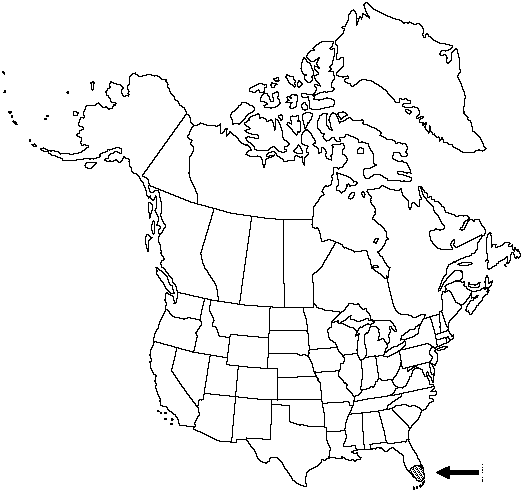Lygodium microphyllum
Prodr. 162. 1810.
Stems creeping. Leaves to ca. 10 m. Petioles borne 2-5 mm apart, 7-25 cm. Sterile pinnae on 0.5-1.5 cm stalks, oblong, 1-pinnate, 5-12 × 3-6 cm; ultimate segments triangular-lanceolate to oblong-lanceolate, truncate to shallowly cordate or somewhat auriculate proximally, usually not lobed, but if lobed, lobes rounded at apex and not directed toward leaf apex; segment apex rounded-acute to obtuse; segments articulate to petiolules, leaving wiry stalks when detached; blade tissue glabrous abaxially. Fertile pinnae on 0.5-1 cm stalks, oblong, 1-pinnate, 3-14 × 2.5-6 cm; ultimate segments ovate to lanceolate-oblong, fringed with fertile lobes, otherwise similar to sterile segments.
Habitat: Terrestrial on riverbanks, swamps (especially cypress swamps), cabbage palm hammocks, and other wet, disturbed sites.
Distribution

Introduced; Fla., Asia.
Discussion
Lygodium microphyllum is native to southeastern Asia and recently naturalized. The species may be very abundant locally and may climb to a height of 9 meters in trees. Sometimes it forms thick mats covering considerable areas at ground level (J. Beckner 1968; C. E. Nauman and D. F. Austin 1978).
Selected References
None.